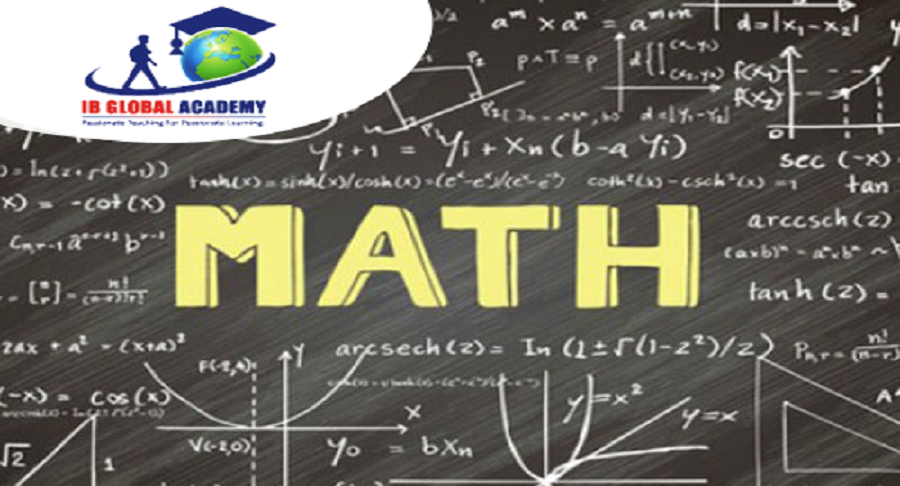




 03/09/2023
03/09/2023
Learners’ conceptual comprehension across topics is strengthened by making links to real-world occurrences; this allows them to apply what they have learned and draw relevant conclusions.
Thus, students have a more comprehensive knowledge about what it entails to be global citizens. It offers students a chance to engage with their learning, gives their experience a sense of purpose, and allows their individuality to flourish.
An IB maths tutor from IBGA is committed to its guiding principles, who constantly work to create well-rounded individuals with character who approach challenges with positivity and an open mind, extend their learning through connections to real-world contexts, and are ready to apply what they have learned in challenging, unpredictable, and complex situations.
Golden Ratio or Divine Proportion, and ‘The Taj Mahal’
We all wonder about the uses of chapters of mathematics in real life. To make this discussion intriguing, let us start with a wonder of the world, ‘The Taj Mahal’, which is an exemplary building erected by mankind.
Once we observe this monument through the lens of mathematics, we find that a lot of math is hidden within the structure.
The golden ratio is one of the most famous irrational numbers, and its value is 1.6180339887, like another significant irrational number, Pi (π). The golden ratio is a mathematical concept that is said to appear in nature and in various iconic pieces of art. It has allegedly inspired artists like Leonardo Da Vinci and Michael Angelo.
Even the Egyptians and Mayans all are said to have incorporated this divine number into works of art and architecture.
The width and altitude of the Taj Mahal’s majestic central arch, and the elevation of the windows within the arch and the elevation of the main space under the domes, all represent the golden ratios. Make learning interesting with IB Maths tutor in India from IBGA!
Uses of Genius Maths: Symmetry
On the inside and outside, the Taj Mahal is a well-known illustration of symmetry. Do you know that to determine the volume and area of the total construction, just half of the building must be examined in reality? (Since the structure has been erected in mirror symmetry.)
Reflection symmetries may be seen in the decorations, which are made of rare and valuable stones inlaid on translucent, white marble. Equally mesmerizing is gazing down at the ground and the intricate paving stone patterns that surround the Taj Mahal.
Algebra and Genes
A (potentially non-associative) algebra known as a genetic algebra is used to represent genetic inheritance. When used in genetics, this algebra frequently contains a foundation that corresponds to genetically distinct gametes, and the algebra’s structural constants encode the odds of creating various sorts of offspring.
Our knowledge of genetics has given us an understanding of things like evolution and inheritance. It is nice that we could model and simulate such things, and for this, we need something called genetic algebra. For example:
Allele
Allele are different forms of gene that represent a character. For instance, say the colour of a flower.
Say Allele ‘A’ represents the white and ‘a’ the red colour. The different combinations of these give us the colours of a flower. Now this leads us to the topic, Hardy Weinberg Principle, which says that if you have the frequency of ‘A’ as ‘p’ (Frequency (A) = p) and ‘a’ as ‘q’ (Frequency (a) = q), then:
Frequency (AA) = P2
Frequency (Aa) = 2pq
Frequency (aa) = q2
Note: We need a pair of alleles to represent a character in this case.
Trigonometry and Marine Engineering
Being among the first disciplines, mathematics aids us in making several calculations that are directly related to nautical concerns. Mathematics may be used to tackle a variety of issues, swinging on the waves, including ship stability, dynamics of the ship while being towed, and navigation.
Sine, cosine, tan, cosec, etc. each denote an angular measurement. So let’s understand the role of trigonometry with a few examples:
Marine Routes/Directions
Trigonometric functions are used to define routes such as the north, south, east, and west. It also tells you in which direction to point the compass in order to travel straight forward. It helps to locate a certain spot during navigation. The shore’s separation from a certain place in the sea may likewise be determined using this method. Learn more with an IB tutor in India!
Sonar
Two sine functions that have been cross-correlated at various offsets. Trigonometry may be used to determine the direction of the sound based on the time delays that are recorded.
Ships
By measuring three distant locations and calculating their positions within a triangle, sailors have used triangulation to locate themselves at sea for centuries. Ships could sail past the horizon without worrying about becoming lost at sea because of this navigational device, which was developed in China circa 100 B.C.
Marine biology
Sea scientists frequently utilize trigonometry to set measurements. For instance, to assess the effect of light levels at various depths on algae’s capacity for photosynthetic activity.
Conclusion The IB math tutor’s real-life examples help the learners understand the value of applying the knowledge they have, and this also maintains their interest to know more.